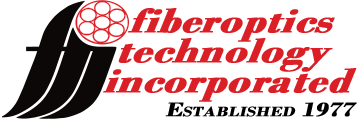FTI Machine Vision Lighting Backlights feature outstanding uniformity and a glass fiber bundle that will not melt when exposed to high energy and/or heat at the input.

Machine vision lighting is categorized into three major approaches: Front lighting, oblique (side) lighting, and backlighting. Subjects for machine vision lighting are broken out into two categories: Specular or Diffuse.
Back lighting a subject creates a sharp, high contrast silhouette, regardless of the subject’s specular characteristic. The machine vision backlight is typically a sheet of white acrylic or frosted glass plate evenly illuminated by a ribbon of fiber. These two components are usually built in a housing, with the fiber emitting light onto the back of the acrylic or frosted glass plate. The plate passes and scatters the light output by the fiber.
To create a silhouette, the camera exposure is adjusted for the illuminated plate. When an object is placed in front of the plate, it will appear dark; this machine vision lighting effect is sometimes referred to as dark field illumination.
Because light output of a machine vision backlight is diffused, they also make good area front lights in machine vision applications when highly specular subjects are being inspected.
FTI manufactures several standard products for machine vision applications with the following features:
- Intense uniform output, created by a proprietary process to insure consistency and optimal performance part to part
- A standard glass bundle length of 36″ (914mm) is suitable for most applications. Because FTI’s bundle is made with glass, the input can withstand heat (and light energy) that could melt plastic fiber products
- FTI’s Machine vision backlights can be used with all strobe lights manufactured today
- Fixture holes in the all-aluminum, black anodized body assist in mounting
- SS input adapter is swaged on the SS sheathing for durability and long life
- Housing thickness less than 1″ (25mm)
Machine vision lighting application guidelines
Use an active area just large enough to silhouette the product. If the backlit area is too large, diffused light from adjacent areas will create flare and blur the edge, making measurement of the silhouette difficult. If the backlit source is too large, use an opaque mask to reduce flare. If further refinement of the image is required, increase the distance of the mask and the product from the backlight. This has a “collimating” effect and should improve the image quality. (It will also reduce the “size” of the backlight, an optical trick that can work for and against you). Standard diffuser plates are acrylic. If your machine vision lighting application involves high temperatures (above 70°C), let us know.
Machine vision lighting options
Different active areas, housing materials, input sizes, bundle lengths, and configurations can be manufactured. Sealing for wet environment, high heat, and special materials for corrosive applications in machine vision lighting are also available options.
FTI backlights are preferred for Machine vision applications because the light guide is made from glass fibers. This feature optimizes the flexibility of the bundle and maximizes temperature resistance when coupled to high output Pulsed Xenon strobes, a common application in high speed Machine Vision applications. (The most powerful strobes will melt the plastic fiber input of some manufacturers’ products).

